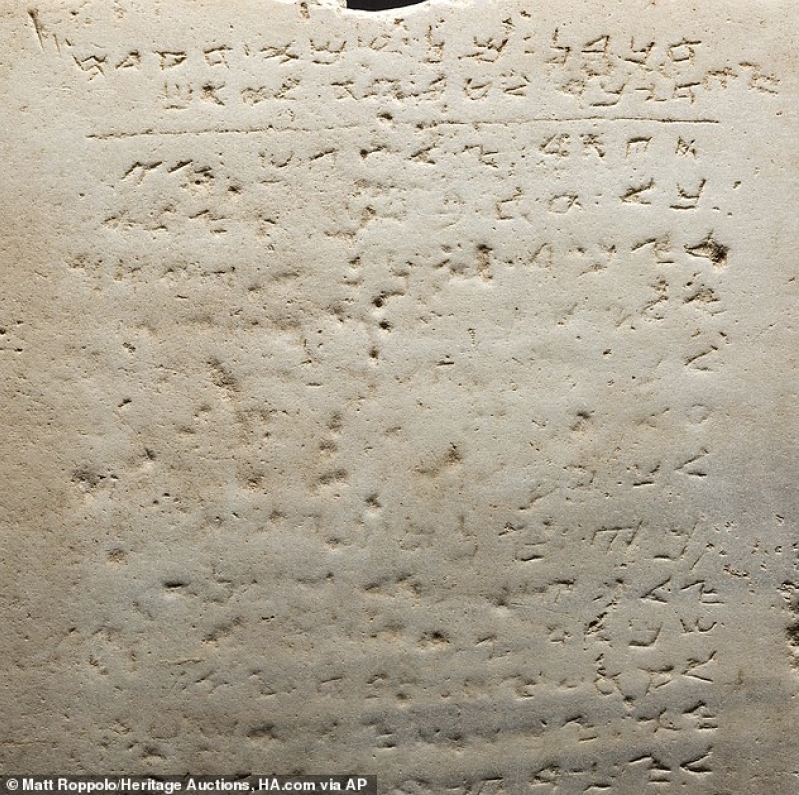
The earliest-known stone tablet with the inscription of the Ten Commandments was sold for $850,000 at an auction in Beverly Hills.
The tablet is dated at 4th century AD, weighs around 115 lbs., and stands at 2 ft. It is made of marble and was inscribed with the ancient Samaritan script of Israel.
Heritage Auctions Director David Michaels believes that the tablet was once used at an entrance of an early Christian church, but due to the invasion of the Romans between 400 to 600 A.D., and of the Crusaders by the 11th century, the church was ravaged to pieces. The tablet was then lost in history for a very long time.
Considered a national treasure by Israel, the Israeli Antiquities Authorities approved of the tablet being shipped to the U.S. in 2005 but with one condition: the new owner must be responsible in displaying the tablet in a public museum.
The tablet was discovered in 1913 during archaeological excavations in a railway station near Yavneh in Israel.
The earliest-known tablet contains the following text, similar to the Ten Commandments as we know of them today. The ancient Hebrew text is translated into English for this article's purposes:
Thou shalt have no other gods before me
Thou shalt not make unto thee any graven image
Thou shalt not take the name of the Lord thy God in vain
Remember the Sabbath day, to keep it holy
Honor thy father and thy mother
Thou shalt not kill
Thou shalt not commit adultery
Thou shalt not steal
Thou shalt not bear false witness
Thou shalt not covet
It was found out that the tablet was in the possession of an Arab man who slabbed it as part of the floor of his courtyard. The wear and tear has taken its toll with many of the inscriptions almost unrecognizable.
In 1943, the tablet was bought by Mr. Y. Kaplan who saw the historical significance of the marble piece. He owned it for 50 years when in the 1990s, he sold it to Robert Deutsch, a rabbi and also an antiques dealer.
In 2005, Deutsch has since displayed the tablet at the Living Torah Museum in New York.
The Living Torah Museum has several other antique pieces up for auction, including a nine-spouted ceramic oil lamp that dates back to 1st century AD. The piece started off with a bidding price of $300,000, and the winning bidder wishes to remain anonymous.







